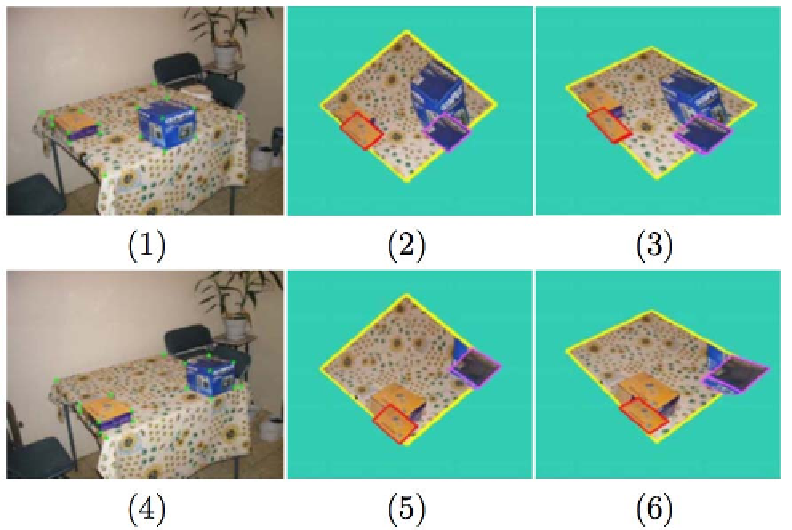Image Processing Reference
In-Depth Information
Figure 6.6:
Comparison of the results of a weak perspective camera model
Xiao
et al.
[
2004b
] and a
full perspective one
Xiao and Kanade
[
2005
] when relying simultaneously on orthonormality constraints
and basis constraints. (1,4) Two input images. (2,5) Reconstruction with a perspective model. (3,6)
Reconstruction with a weak perspective model. Note that, in the latter case, some distortion can be
observed. Courtesy of T. Kanade
6.3
IMPOSINGGEOMETRICCONSTRAINTS
While temporal consistency regularizers have proved effective in many situations, they still assume
that the input images have been acquired in an orderly sequence and, therefore, do not generalize
to cases where the images are independent. Furthermore, they are not always sufficient to fully
disambiguate the reconstruction problem. As a consequence, many techniques have also exploited
geometric properties for structure and motion estimation. Here, as in the template-based case, we
distinguish between global and local shape constraints.
6.3.1 GLOBAL CONSTRAINTS
In contrast to the template-based approach presented in Chapter
3
, the basic formulation of non-
rigid structure from motion techniques introduced in Chapter
5
includes a global linear deformation
model by design, since the surface is assumed to be generated from a linear combination of basis
shapes. Note, however, that, in NRSFM, the basis shapes are unknown, and thus do not provide as

Search WWH ::

Custom Search